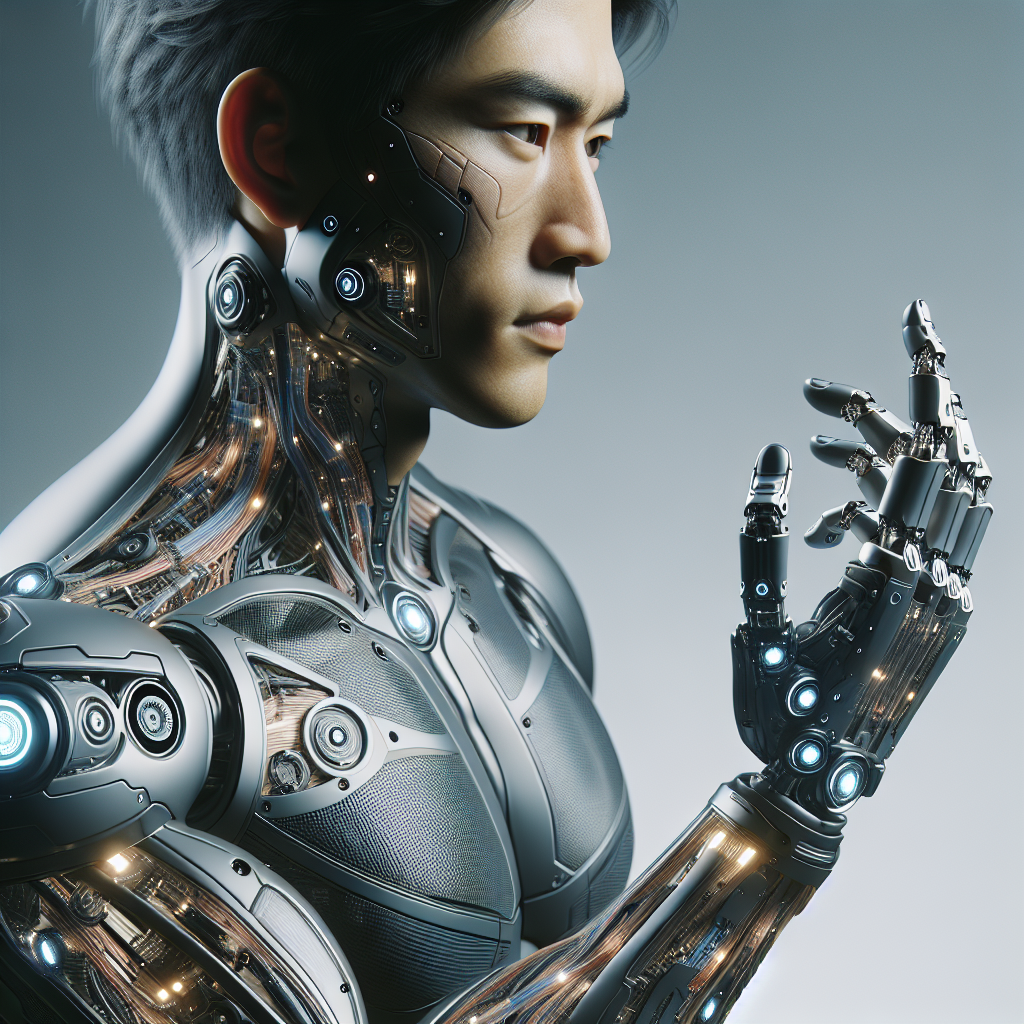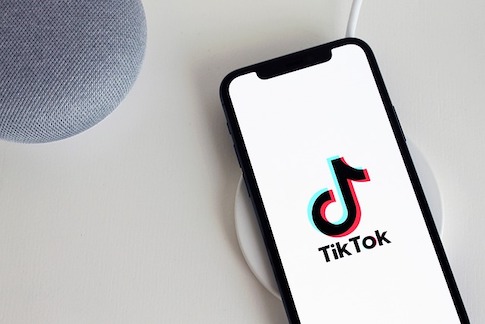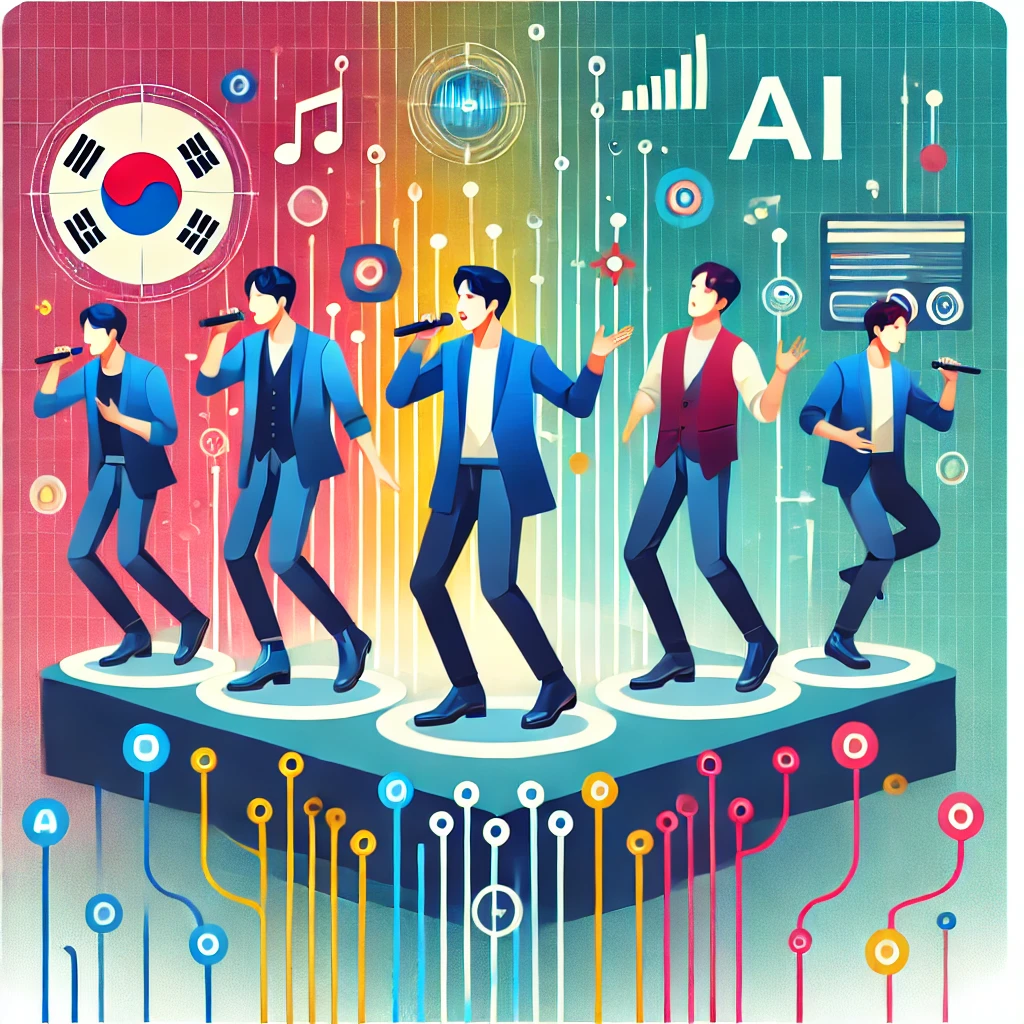Prosthetic limbs have come a long way, from old-fashioned wooden and tin designs to modern ones made of silicone and carbon fiber. Now, there’s a new kind of prosthetic called a bionic arm that uses artificial intelligence (AI) technology. Atom Limbs, a company in California, is leading the way in this exciting development. Their bionic arm has special sensors and machine learning that can understand signals from the user’s brain. This allows them to control and move the prosthetic arm just like a real one.
The Atom Limbs bionic arm is lightweight and doesn’t need any surgery or implants to work. It attaches to the person’s remaining limb using sensors and a cup that fits over it. The arm connects to a computer interface, so the user can control it digitally on a screen. It’s pretty amazing because they can move a part of their body that they don’t actually have anymore.
The only downside is that these bionic arms can be expensive. Assistive devices like this often cost a lot of money, which makes them hard to afford for people with limited finances. Atom Limbs is trying to make their bionic arm more affordable, aiming for a price of around $20,000. That’s still a lot of money, though, and not everyone can afford it.
There are also some other things to think about when it comes to bionic arms. Some people say that the focus on making them better and more high-tech has made us forget about how useful they actually are in real life. Tilly Lockey, who is famous on social media and has been using bionic arms since she was young, says that it’s important to get feedback from users and test the arms to make sure they work well. Atom Limbs is still working on their bionic arm and collecting data for approval in the US. It will take some time before these arms are available for everyone to use, but they have the potential to make a big difference in the lives of people with limb differences.
Original news source: The ‘mind-bending’ bionic arm powered by AI (BBC)
🎧 Listen:
Slow
Normal
Fast
📖 Vocabulary:
| 1 | prosthetic | A man-made device designed to replace a missing body part |
| 2 | bionic | Relating to or resembling a machine, especially one that can replace human effort |
| 3 | artificial intelligence | The simulation of human intelligence by machines |
| 4 | sensors | Devices that detect changes in the environment and send this information to other electronic devices |
| 5 | machine learning | A type of technology that allows computers to learn from experience |
| 6 | lightweight | Not heavy, easy to carry |
| 7 | implants | Devices or pieces of material surgically placed inside the body to support or replace a body function or structure |
| 8 | interface | A point of interaction between a computer and a user |
| 9 | digitally | Done or operated using a computer or electronic device |
| 10 | affordable | Reasonably priced; not too expensive |
| 11 | assistive | Devices or equipment designed to help people who have difficulties performing certain tasks |
| 12 | finances | Money matters, especially those relating to income and expenditure |
| 13 | feedback | Opinions or comments about something, based on experience |
| 14 | approval | Official permission or acceptance |
| 15 | potential | The ability to develop or improve in the future |
Group or Classroom Activities
Warm-up Activities:
– News Summary
Instructions: In this activity, students will work in pairs or small groups. Each group will be given a copy of the article. They will have a set amount of time (e.g. 5 minutes) to read the article and then summarize the main points in their own words. After the time is up, each group will take turns presenting their summary to the class. Encourage students to use their own language and paraphrase rather than directly copying from the article.
– Opinion Poll
Instructions: Divide the class into pairs or small groups. Give each group a list of discussion questions related to the article (e.g. Do you think bionic arms are a positive development? Should governments provide financial assistance to help people afford prosthetic limbs?). Each group will discuss the questions and then choose a spokesperson to present their group’s opinions to the class. Encourage students to justify their opinions with reasons and examples.
– Vocabulary Pictionary
Instructions: Write a list of vocabulary words from the article on the board (e.g. prosthetic, artificial intelligence, sensors, machine learning). Divide the class into two teams. One student from each team will come to the front of the class and be shown a vocabulary word. They must then draw a picture on the board to represent that word, while their team tries to guess what word it is. The first team to correctly guess the word gets a point. Continue until all the words have been used.
– Headline Creation
Instructions: Divide the class into pairs or small groups. Give each group a blank sheet of paper. Instruct them to create a newspaper headline related to the article. Encourage creativity and humor. After a set amount of time (e.g. 5 minutes), each group will share their headline with the class. Discuss as a class which headline is the most attention-grabbing and why.
– Future Predictions
Instructions: In this activity, students will work in pairs or small groups. Each group will be given a set of discussion questions related to the future of bionic arms (e.g. How do you think bionic arms will continue to evolve in the future? What impact do you think they will have on society?). Students will discuss the questions and then come up with their own predictions for the future of bionic arms. After the discussion, groups can share their predictions with the class.
🤔 Comprehension Questions:
1. What is the new kind of prosthetic arm called?
2. How does the bionic arm from Atom Limbs work?
3. How does the bionic arm attach to the person’s remaining limb?
4. How can the user control the bionic arm?
5. Why might some people not be able to afford a bionic arm?
6. What is Tilly Lockey’s opinion on improving bionic arms?
7. What is Atom Limbs currently doing with their bionic arm?
8. How might bionic arms make a difference in the lives of people with limb differences?
Go to answers ⇩
🎧✍️ Listen and Fill in the Gaps:
Prosthetic limbs have come a long way, from old-fashioned wooden and tin designs to modern ones made of silicone and carbon fiber. Now, there’s a new kind of prosthetic called a bionic arm that uses artificial intelligence (AI) (1)______. Atom Limbs, a (2)______ in (3)______, is leading the way in this exciting development. Their bionic arm has special sensors and machine learning that can understand signals from the user’s (4)______. This allows them to control and move the prosthetic arm just like a real one.
The Atom Limbs bionic arm is lightweight and doesn’t need any surgery or implants to work. It attaches to the person’s remaining limb using (5)______ and a cup that fits over it. The arm connects to a (6)______ interface, so the user can control it digitally on a screen. It’s pretty amazing because they can move a part of their body that they don’t actually have anymore.
The only downside is that these bionic arms can be (7)______. (8)______ devices like this often cost a lot of money, which makes them hard to afford for people with limited finances. Atom Limbs is trying to make their bionic arm more affordable, (9)______ for a price of around $20,000. That’s still a lot of money, though, and not everyone can afford it.
There are also some other (10)______ to think about when it comes to bionic arms. Some people say that the focus on (11)______ them better and more high-tech has made us forget about how (12)______ they actually are in real life. Tilly Lockey, who is famous on social (13)______ and has been using (14)______ arms since she was (15)______, says that it’s important to get feedback from users and test the arms to make sure they work well. Atom Limbs is still working on their bionic arm and collecting data for approval in the US. It will take some time before these arms are available for everyone to use, but they have the potential to make a big difference in the lives of (16)______ with limb differences.
Go to answers ⇩
💬 Discussion Questions:
Students can ask a partner these questions, or discuss them as a group.
1. What is a bionic arm and how is it different from a regular prosthetic limb?
2. How would you feel if you had to use a bionic arm instead of a real one?
3. Do you think bionic arms are a good invention? Why or why not?
4. What are some advantages of using a bionic arm?
5. Do you think it’s fair that bionic arms are so expensive? Why or why not?
6. How do you think bionic arms could improve the lives of people with limb differences?
7. Would you like to try using a bionic arm? Why or why not?
8. What are some potential challenges or drawbacks of using a bionic arm?
9. How do you think bionic arms could be made more affordable for people with limited finances?
10. What are some other assistive devices that could be useful for people with limb differences?
11. How important do you think it is to gather feedback from users and test bionic arms before making them available to the public?
12. Do you think bionic arms will become more common in the future? Why or why not?
13. How do you think AI technology could be used in other types of prosthetic limbs?
14. What are some ways that bionic arms could be improved or made even more advanced?
15. Can you think of any potential ethical issues or concerns related to the use of bionic arms? Why or why not?
Individual Activities
📖💭 Vocabulary Meanings:
Match each word to its meaning.
Words:
1. prosthetic
2. bionic
3. artificial intelligence
4. sensors
5. machine learning
6. lightweight
7. implants
8. interface
9. digitally
10. affordable
11. assistive
12. finances
13. feedback
14. approval
15. potential
Meanings:
(A) Devices or equipment designed to help people who have difficulties performing certain tasks
(B) Relating to or resembling a machine, especially one that can replace human effort
(C) Devices that detect changes in the environment and send this information to other electronic devices
(D) A type of technology that allows computers to learn from experience
(E) A man-made device designed to replace a missing body part
(F) The ability to develop or improve in the future
(G) Reasonably priced; not too expensive
(H) The simulation of human intelligence by machines
(I) A point of interaction between a computer and a user
(J) Money matters, especially those relating to income and expenditure
(K) Official permission or acceptance
(L) Devices or pieces of material surgically placed inside the body to support or replace a body function or structure
(M) Done or operated using a computer or electronic device
(N) Not heavy, easy to carry
(O) Opinions or comments about something, based on experience
Go to answers ⇩
🔡 Multiple Choice Questions:
1. What is the name of the company that is developing the bionic arm?
(a) Atom Limbs
(b) Silicon Prosthetics
(c) Carbon Fiber Innovations
(d) Tin Designs
2. How does the bionic arm connect to the user’s remaining limb?
(a) Through surgery and implants
(b) By attaching directly to the skin
(c) Using sensors and a cup
(d) With the help of a computer interface
3. What technology does the bionic arm use to understand signals from the user’s brain?
(a) Artificial intelligence (AI)
(b) Virtual reality (VR)
(c) Robotics
(d) Genetic engineering
4. What is one advantage of the bionic arm mentioned in the article?
(a) It can be controlled digitally on a screen
(b) It is lightweight and doesn’t require surgery or implants
(c) It is made of silicone and carbon fiber
(d) It is affordable for everyone to use
5. Why are bionic arms often expensive?
(a) They are made using advanced technology
(b) They need to be customized for each individual
(c) They require a lot of materials to make
(d) They are not in high demand
6. What does Tilly Lockey emphasize about bionic arms?
(a) The need for more advanced technology
(b) The importance of user feedback and testing
(c) The affordability of these devices
(d) The popularity of bionic arms on social media
7. What is Atom Limbs currently doing with their bionic arm?
(a) Selling it to customers worldwide
(b) Developing a new version with even more features
(c) Lowering the price to make it more affordable
(d) Collecting data for approval in the US
8. What potential impact can the bionic arm have on people with limb differences?
(a) It can replace the need for physical therapy
(b) It can help them become social media influencers
(c) It can eliminate the need for prosthetic limbs altogether
(d) It can make a big difference in their lives
Go to answers ⇩
🕵️ True or False Questions:
1. The arm attaches to the person’s remaining limb using sensors and a cup that fits over it.
2. The Atom Limbs bionic arm lacks special sensors and machine learning that can interpret signals from the user’s brain.
3. Prosthetic limbs have stayed the same from old-fashioned designs to modern ones made of silicone and carbon fiber.
4. Bionic arms can be affordable, but Atom Limbs is not working on making them more cost-effective, aiming for a price of around $20,000.
5. The bionic arm is lightweight and does not require surgery or implants to function.
6. Atom Limbs, a California-based company, is leading the way in developing bionic arms.
7. The user can control the bionic arm digitally on a screen connected to a computer interface.
8. A traditional type of prosthetic called a bionic arm uses artificial intelligence (AI) technology.
Go to answers ⇩
📝 Write a Summary:
Write a summary of this news article in two sentences.
Check your writing now with the best free AI for English writing!
Writing Questions:
Answer the following questions. Write as much as you can for each answer.
Check your answers with our free English writing assistant!
1. What is a bionic arm and how is it different from traditional prosthetic limbs?
2. How does the Atom Limbs bionic arm allow users to control and move it?
3. How does the bionic arm attach to the user’s body and how is it controlled?
4. Why can’t everyone afford a bionic arm and what is Atom Limbs doing to make it more affordable?
5. What concerns have some people raised about the focus on high-tech bionic arms and what is Tilly Lockey’s opinion on this?
✅ Answers
🤔✅ Comprehension Question Answers:
1. What is the new kind of prosthetic arm called?
The new kind of prosthetic arm is called a bionic arm.
2. How does the bionic arm from Atom Limbs work?
The bionic arm from Atom Limbs uses artificial intelligence technology. It has special sensors and machine learning that can understand signals from the user’s brain, allowing them to control and move the prosthetic arm just like a real one.
3. How does the bionic arm attach to the person’s remaining limb?
The bionic arm attaches to the person’s remaining limb using sensors and a cup that fits over it.
4. How can the user control the bionic arm?
The user can control the bionic arm digitally on a screen. The arm connects to a computer interface, which allows the user to control its movements.
5. Why might some people not be able to afford a bionic arm?
Bionic arms can be expensive, making them hard to afford for people with limited finances.
6. What is Tilly Lockey’s opinion on improving bionic arms?
Tilly Lockey, who has been using bionic arms since she was young, believes that it’s important to get feedback from users and test the arms to make sure they work well.
7. What is Atom Limbs currently doing with their bionic arm?
Atom Limbs is still working on their bionic arm and collecting data for approval in the US.
8. How might bionic arms make a difference in the lives of people with limb differences?
Bionic arms have the potential to make a big difference in the lives of people with limb differences. They can help these individuals regain some of the functionality and movement that they may have lost, improving their quality of life.
Go back to questions ⇧
🎧✍️✅ Listen and Fill in the Gaps Answers:
(1) technology
(2) company
(3) California
(4) brain
(5) sensors
(6) computer
(7) expensive
(8) Assistive
(9) aiming
(10) things
(11) making
(12) useful
(13) media
(14) bionic
(15) young
(16) people
Go back to questions ⇧
📖💭✅ Vocabulary Meanings Answers:
1. prosthetic
Answer: (E) A man-made device designed to replace a missing body part
2. bionic
Answer: (B) Relating to or resembling a machine, especially one that can replace human effort
3. artificial intelligence
Answer: (H) The simulation of human intelligence by machines
4. sensors
Answer: (C) Devices that detect changes in the environment and send this information to other electronic devices
5. machine learning
Answer: (D) A type of technology that allows computers to learn from experience
6. lightweight
Answer: (N) Not heavy, easy to carry
7. implants
Answer: (L) Devices or pieces of material surgically placed inside the body to support or replace a body function or structure
8. interface
Answer: (I) A point of interaction between a computer and a user
9. digitally
Answer: (M) Done or operated using a computer or electronic device
10. affordable
Answer: (G) Reasonably priced; not too expensive
11. assistive
Answer: (A) Devices or equipment designed to help people who have difficulties performing certain tasks
12. finances
Answer: (J) Money matters, especially those relating to income and expenditure
13. feedback
Answer: (O) Opinions or comments about something, based on experience
14. approval
Answer: (K) Official permission or acceptance
15. potential
Answer: (F) The ability to develop or improve in the future
Go back to questions ⇧
🔡✅ Multiple Choice Answers:
1. What is the name of the company that is developing the bionic arm?
Answer: (a) Atom Limbs
2. How does the bionic arm connect to the user’s remaining limb?
Answer: (c) Using sensors and a cup
3. What technology does the bionic arm use to understand signals from the user’s brain?
Answer: (a) Artificial intelligence (AI)
4. What is one advantage of the bionic arm mentioned in the article?
Answer: (b) It is lightweight and doesn’t require surgery or implants
5. Why are bionic arms often expensive?
Answer: (c) They require a lot of materials to make
6. What does Tilly Lockey emphasize about bionic arms?
Answer: (b) The importance of user feedback and testing
7. What is Atom Limbs currently doing with their bionic arm?
Answer: (d) Collecting data for approval in the US
8. What potential impact can the bionic arm have on people with limb differences?
Answer: (d) It can make a big difference in their lives
Go back to questions ⇧
🕵️✅ True or False Answers:
1. The arm attaches to the person’s remaining limb using sensors and a cup that fits over it. (Answer: True)
2. The Atom Limbs bionic arm lacks special sensors and machine learning that can interpret signals from the user’s brain. (Answer: False)
3. Prosthetic limbs have stayed the same from old-fashioned designs to modern ones made of silicone and carbon fiber. (Answer: False)
4. Bionic arms can be affordable, but Atom Limbs is not working on making them more cost-effective, aiming for a price of around $20,000. (Answer: False)
5. The bionic arm is lightweight and does not require surgery or implants to function. (Answer: True)
6. Atom Limbs, a California-based company, is leading the way in developing bionic arms. (Answer: True)
7. The user can control the bionic arm digitally on a screen connected to a computer interface. (Answer: True)
8. A traditional type of prosthetic called a bionic arm uses artificial intelligence (AI) technology. (Answer: False)
Go back to questions ⇧














